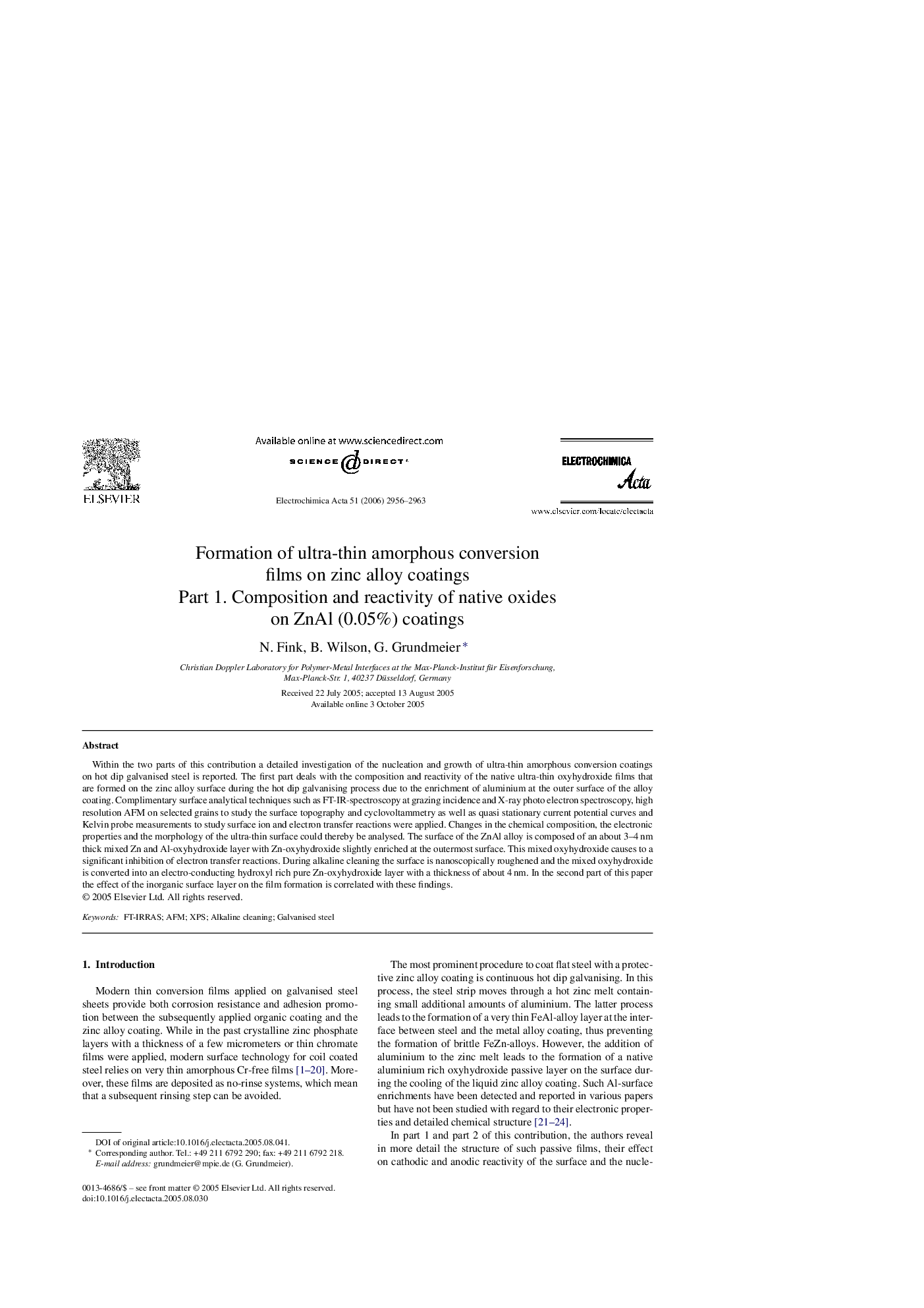| Article ID | Journal | Published Year | Pages | File Type |
|---|---|---|---|---|
| 196635 | Electrochimica Acta | 2006 | 8 Pages |
Within the two parts of this contribution a detailed investigation of the nucleation and growth of ultra-thin amorphous conversion coatings on hot dip galvanised steel is reported. The first part deals with the composition and reactivity of the native ultra-thin oxyhydroxide films that are formed on the zinc alloy surface during the hot dip galvanising process due to the enrichment of aluminium at the outer surface of the alloy coating. Complimentary surface analytical techniques such as FT-IR-spectroscopy at grazing incidence and X-ray photo electron spectroscopy, high resolution AFM on selected grains to study the surface topography and cyclovoltammetry as well as quasi stationary current potential curves and Kelvin probe measurements to study surface ion and electron transfer reactions were applied. Changes in the chemical composition, the electronic properties and the morphology of the ultra-thin surface could thereby be analysed. The surface of the ZnAl alloy is composed of an about 3–4 nm thick mixed Zn and Al-oxyhydroxide layer with Zn-oxyhydroxide slightly enriched at the outermost surface. This mixed oxyhydroxide causes to a significant inhibition of electron transfer reactions. During alkaline cleaning the surface is nanoscopically roughened and the mixed oxyhydroxide is converted into an electro-conducting hydroxyl rich pure Zn-oxyhydroxide layer with a thickness of about 4 nm. In the second part of this paper the effect of the inorganic surface layer on the film formation is correlated with these findings.
